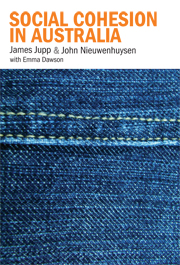Foreword
Published online by Cambridge University Press: 22 September 2009
Summary
Australia is one of the world's most diverse societies. It is a country of immigration, nearly half of whose population was born, or is the child of a parent born, overseas.
Down the decades, successive Australian governments have pursued planned immigration intake programs, accompanied by settlement services. In addition, ever increasing temporary migration and tourism have been facilitated and encouraged, enlarging further the diverse composition of Australian society.
It is a substantial achievement that this persisting population expansion from a multitude of varying cultures has been achieved with very little divisiveness, though the lack of Indigenous equality remains a thorn.
With the unparalleled persistence of steady, strong economic growth in the past 11 years, skill shortages and bottlenecks have emerged despite the immigration program and temporary entry of workers. And it is highly likely that substantial increases in immigration intake targets will ensue, even though current levels are at their highest for 20 years.
It is clear that, in order to achieve and accommodate this larger inflow, social cohesion will be especially important at a time when there are potential tensions arising indirectly from the international ‘war on terror’ and the freer movement of people in a globalised world.
Social Cohesion in Australia is, therefore, a well-timed publication.
- Type
- Chapter
- Information
- Social Cohesion in Australia , pp. viiPublisher: Cambridge University PressPrint publication year: 2007



